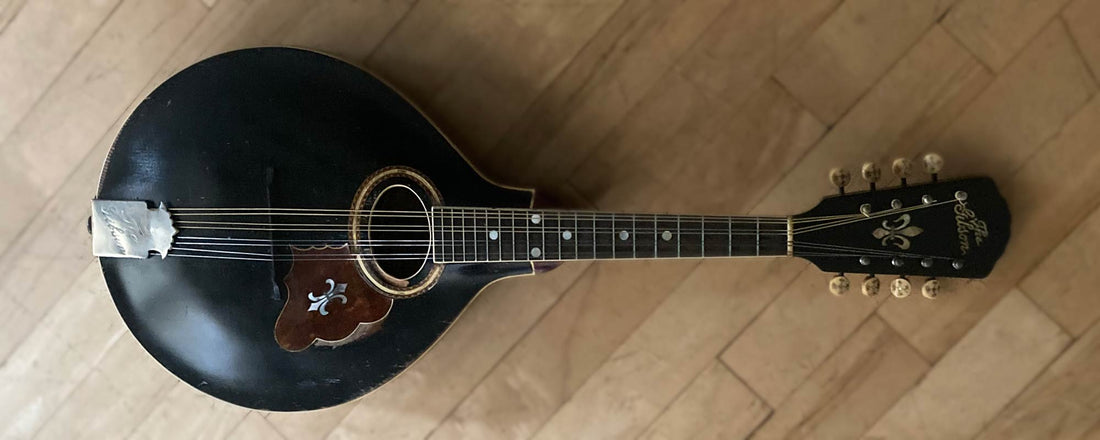The Gibson Guitar people of Kalamazoo, Michigan, were pioneers in our industry over a hundred-and-twenty years ago, coming up with designs for their mandolins and guitars that presaged the entire industry’s thinking for decades to come and to this day. In the late 19th century, when mandolin orchestras and solo mandolin playing were coming into vogue, the standard was the Italian-type “bowl-back”, with the body having several tapered and fitted ribs and a flat top with a bend across it in the bridge area. This was an outgrowth of lutes and other European stringed instruments that had been made in one form or another for hundreds of years. Gibson's claims, so brazenly expressed in their catalogs of the day, were that the instruments should have an arched top and back, carved from solid wood, similar to the violin family but with an oval or sometimes round soundhole. This shocked many but what they couldn't deny was that the volume and projection of Gibson's mandolins pretty much blew the older style ones away. The race was on, and other makers followed suit in short order and the bowl-back types soon mostly dropped from sight.
It wasn't long before Gibson took the same tack with their guitars and the Style 0, which was larger than anything extant, rapidly became the king of the guitar accompaniment world. And it wasn’t long after that when one of Gibson's star designers, Lloyd Loar, came up with the idea, in the early 1920s, of using the F-hole design, just like in the violin family, for both guitars and mandolins and so came about the incomparable F-5 mandolins and early L-5 guitars, which are both revered as top collectors’ items and have been copied in general construction themes by just about everyone to this day, because they’re just plain great. When you think about it, those early guitars led to the later full-body electrics with laminated backs and sides, like the venerable late-1940s ES-175 and later to the thinner-bodied versions like the ES-330 and ES-335, copied to a huge extent by just about everyone right up to now. Wes Montgomery? Chuck Berry? All those Gretsch Chet Atkins models? Music today wouldn't be the same if Loyd Loar hadn’t done the basics of what he done back in the 1920s. Mandolins? Well, no one ever tried, or at least succeeded, in finding any reason at all to do much with the F-5 besides pretty much copy it, and play it. Say what you will about where that company has gone in the last hundred years with its various changes of ownership, some of it noxious corporate stuff, and some of their wackier forays into fretted instrument design, but what they instigated for acoustic and hollowbody electric instruments over a hundred years ago still holds up like a shining beacon in the night.

